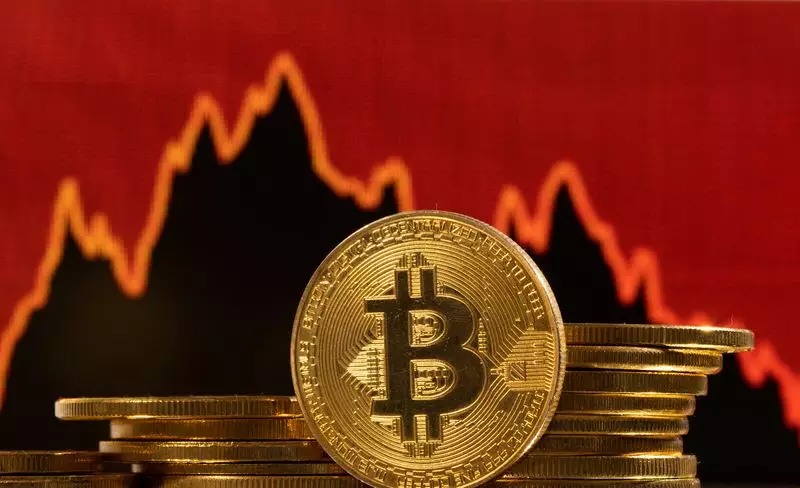Bitcoin, the world’s leading cryptocurrency, has been notorious for its extreme price fluctuations. For traditional investors, this volatility is often viewed as a daunting risk, incompatible with conservative approaches aimed at capital preservation. However, recent viewpoints from BCA Research suggest that Bitcoin’s erratic nature might not be a drawback but rather an essential characteristic that can contribute positively to a diversified investment portfolio.
For many years, prospective investors have expressed hesitation towards embracing Bitcoin due to its notorious swings in valuation. Statistically, Bitcoin has maintained an astounding average monthly volatility of 76.1%, starkly contrasting with traditional, more stable assets like bonds, which exhibit only an average volatility of around 5.4%. Thus, one must critically evaluate whether volatility inherently translates to risk or whether it conceivably harbors untapped potential for investors who can navigate it effectively.
BCA Research highlights the need for a paradigm shift in the way we perceive asset volatility. Instead of viewing Bitcoin solely through the lens of risk, it is crucial to examine how it fits within the overall structure of an investment portfolio and the implications it has for overall risk and return dynamics. The argument advanced is compelling: solely focusing on volatility could obscure the crucial insights regarding the asset’s utility in a broader investment strategy.
To bolster this argument, BCA Research refers to insights from a paper by AQR that discusses how high-volatility assets can sometimes yield superior capital efficiency compared to their low-volatility counterparts. In practical terms, investments in highly volatile assets like Bitcoin can potentially generate greater returns without necessitating a significant allocation of resources, thereby allowing investors to preserve capital for additional investment avenues.
To concretize this concept, BCA Research presents a hypothetical scenario that contrasts Bitcoin with a fictitious low-volatility asset dubbed “Boringcoin.” The critical finding here is that both assets boast similar risk-adjusted return profiles, with identical Sharpe ratios of 0.61. However, their volatility exhibits stark differences: Boringcoin’s volatility mirrors that of bonds, severely limiting the returns achievable without a substantial increase in capital allocation.
When constructing an optimal portfolio targeting a particular risk-adjusted return, the differences in volatility play a pivotal role. With Bitcoin, a mere 8% allocation is sufficient for a portfolio to meet the risk-return objectives of 10% annual volatility. Conversely, Boringcoin’s lower volatility necessitates a leverage in excess of 100% simply to approach a similar expected return profile, which introduces additional risks and complicates investment logistics.
BCA Research subsequently ran simulations that juxtaposed traditional stock-and-bond portfolios against those incorporating Bitcoin and Boringcoin. The findings illuminated an important truth: the high volatility presented by Bitcoin enables strong capital returns with minimal allocation, in stark contrast to Boringcoin, whose restrained nature demands a much larger financial commitment to yield comparably satisfactory returns.
While the theoretical framework presented by BCA Research is compelling, it is essential to address the real-world challenges that come with investing in high-volatility assets like Bitcoin. Investor psychology plays a critical role in financial decision-making, particularly during periods of significant market turbulence. The emotional toll that Bitcoin’s price swings take on investors cannot be understated; for instance, during notable downturns, Bitcoin has historically exhibited losses greater than 70%, while the ostensibly stable Boringcoin experienced losses of only around 7%.
This stark divergence in investor reaction poses a challenge for those hoping to employ a high-volatility investment strategy. Even if Bitcoin holds the potential for superior long-term returns, the mental and emotional strain of weathering steep price declines can lead investors to panic, premature selling, and ultimately negate the potential benefits of holding such an asset.
While BCA Research presents a robust argument for the integration of high-volatility assets like Bitcoin into investment portfolios, it is crucial for investors to recognize and address the emotional complexities that come with such strategies. Bitcoin’s volatility is both a double-edged sword and an opportunity; successful navigation of this landscape requires not only a strategic understanding of capital allocation but also an acknowledgment of the emotional resilience needed to endure price fluctuations. As the market landscape evolves, finding a harmony between empirical strategy and psychological preparedness will be paramount for investors looking to include high-volatility assets in their portfolios.

